On April 12, 1945 Franklin Delano Roosevelt died of a cerebral hemorrhage at his “Little White House” in Warm Springs, Georgia. Having served as President since 1933, he saw the nation through the Great Depression, the rising turmoil across the globe and the culminating World War. To discuss FDR and his wide-ranging influence, I asked a few questions to the man who wrote a trilogy on Roosevelt’s time as Commander in Chief—author and Museum friend, Nigel Hamilton, PhD.
Nigel Hamilton is a best-selling and award-winning biographer of President John F. Kennedy, General Bernard "Monty" Montgomery, and President Bill Clinton, among other subjects. His most recent book, War and Peace: FDR's Final Odyssey: D-Day to Yalta, 1943–1945, and the first book in the trilogy The Mantle of Command: FDR at War, 1941–1942 was long-listed for the National Book Award. He is a senior fellow at the McCormack Graduate School, University of Massachusetts, Boston, and splits his time between Boston, Massachusetts, and New Orleans, Louisiana.
What about FDR’s background prepares him for the Herculean tasks he faced as president?
How an American aristocrat—let’s call him that, given his background and wealth—could have become the man who led his nation through and out of the Great Depression in the 1930s is one thing. How that aristocrat, who had never worn a uniform or gone to military academy, became the greatest leader and military strategist of World War II is yet another.
What equips a man—or woman—for such a leadership role in times of national crisis? Lincoln was the president Franklin Roosevelt most admired, quoted—and emulated. And Lincoln came from a proverbial log-cabin! He was forever called the "rail-splitter" for his early job making farmer’s wooden fences, whereas FDR went to Groton and Harvard, and collected stamps!
No, we won’t trace the origins of great leadership in the outward circumstances of a child or man, but in the inner character. No-one—save perhaps a few friends and his wife Mary—expected Lincoln to reach the presidency. And no-one really expected Franklin Delano Roosevelt to do so either. Both were tall—6’4 and 6’3—but little else connected them. Save their minds, as they matured. Both men were able to feed their experience of the trials of life into a growing conviction they had been called to represent and lead their peoples well, and responsibly.
In FDR’s case, the two greatest trials were medical: his near-death from the flu virus in 1918, when he was carried off the boat from Europe to his home in New York on a stretcher, but survived; and the poliomyelitis that felled him in 1921. For the rest of his life he would never actually walk, save on steel stilts and with the aid of a companion holding his arm to keep him upright—and keep up the pretense. Even Stalin, later, could not believe such a man could have overcome such a deficit and become such a world leader.
How FDR applied that mind, and strength of underlying character, to guide the democracies in World War II was the question I wanted to answer in FDR at War.
What would you say was FDR’s toughest decision as Commander in Chief?
FDR faced an unending series of problems as Commander in Chief—beginning with that of Congress! How to get enough men trained to fight, via the draft, before World War II even began for the United States…
Each problem required a decision. Whether to strike at Japanese forces in the hours before Pearl Harbor, when he knew from American decrypts that Japan was about to start war, but didn’t know where—and judged, in the end, it was better the enemy should strike the first blow, just as Lincoln had done at Fort Sumter? Whether, after that, to surrender the Philippines to the Japanese? Whether to prioritize the Pacific or Europe as the primary theater of war? Whether to fund the massive research necessary to crate an atomic bomb that would open Pandora’s Box in terms of its destructiveness…?
But to me, as FDR’s war-chronicler, the toughest decision he had to make was D-Day—as this Museum rightly emphasizes. There were so many men whose lives would be at risk!
FDR had been here to New Orleans to see the job being done by the Higgins Boat Company, and was rightly proud of the achievement. But numbers alone wouldn’t win the war: American men and women, if tasked with the right objectives, and trained to do the job with the right equipment, would do that, he was sure. But where? Once Hitler’s Germany was defeated, Japan would inevitably fall, he reasoned to his generals and admirals when they argued for Pacific priority; whereas the opposite was not the case, he countered.
Millions, literally, were being murdered by the Nazis every year. The question was, though: where and when to use those New Orleans landing craft? His generals pleaded to use them against German-defended France in 1942—before American soldiers had ever fired a shot at a German! When FDR sent his “No!” from Hyde Park, he signed himself “Commander in Chief.” He did so again in 1943—insistent that not only the men but their officers have the necessary combat experience, and weapons, to beat the Wehrmacht in open battle. In 1944 they did—thanks to FDR’s patient, resolute determination as US Commander in Chief.
D-Day—as strategy and in terms of its timing—was surely, surely FDR’s greatest strategic decision. And tough because, although he could order his generals to “pipe down” over a premature D-Day invasion, he still had his ally, Winston Churchill, to fight—since Churchill was dead against letting British troops take part in the landings!
What would you say was FDR’s best decision of the war?
Let me wade into deeper, political waters here. This year was the 75th anniversary of the Yalta Conference—and FDR’s reputation has suffered, ever since the Cold War began, from the accusation that he “lost” Poland, and was not tough enough with Stalin.
Perhaps he wasn’t. He certainly wasn’t well—in fact FDR was dying at Yalta in February 1945, and had but a few weeks to live. He was never in any doubt that Stalin was a psychopathic dictator, running a system of “government” in Russia that was guilty of mass murder, as I showed and quoted in my second volume, Commander in Chief. Yet he never regretted the greatest other decision of his life in World War II: which was to treat Hitler as his first priority, or Enemy Number One, and deal with other problems thereafter, using what he christened, hopefully, a United Nations Organization. To achieve this objective—the defeat of the Third Reich—he had to make the Soviet Union, he felt, his primary ally.
If you think about it: to send Harry Hopkins to Russia soon after Hitler’s Barbarossa attack on Russia in the summer of 1941, before the war began for the United States; to supply an estimated 12 per cent of Russia’s war needs in the fight against Hitler; and to get Stalin, in person at Tehran in December 1943, to agree to launch a synchronous offensive against Nazi Germany immediately after the D-Day Invasion began! In that way, Hitler would have to fight on two fronts: a fatal combination. As Hitler had already warned his generals, an Allied invasion of France would “decide the war.” If the Wehrmacht was able to defeat the invasion, Hitler would remain in control of all western Europe; if not, Germany would fall.
It did.
FDR’s best decision, therefore: taking Stalin as his partner in war—which destroyed the odious Third Reich and ended the Holocaust.
His worst decision?
Morally speaking, the internment of Japanese-Americans living on the West Coast.
Bowing to panic in California and pressure from the local military authorities, FDR agreed to use his executive power as President and Commander in Chief to move an entire population of Japanese-Americans into makeshift camps in the interior—concentration camps, as the British had christened similar installations for ordinary civilians during the Boer War. People have argued this was no different behavior than the Germans or the Japanese in World War II.
That is a difficult argument to respect, in my view—however much one feels for the innocent Japanese-American families involved. What the German SS did in their concentration camps, and the Japanese did in theirs, will live in infamy, not mere shame.
No, in terms of WWII decision-making, FDR’s failure to make a decision was his worst decision, in my view! Namely: his failure to prepare Harry Truman to take over from him as President and Commander in Chief in 1945.
“What was he thinking?” is the phrase we use today when puzzling over a bad decision someone has made. Hitler declaring war on the United States on December 11, 1941, four days after Pearl Harbor, say? Or Churchill acting as British generalissimo at Christmas, 1943, and launching an amphibious attack at Anzio to seize Rome a few weeks later, using an unprepared, unrehearsed coup de main? Both are still hard to credit. Yet FDR’s failure to prepare Truman to succeed him is to me an even greater mystery. Both Hitler and Churchill imagined they were military geniuses—which they were not! But FDR did not think he was a military genius—though arguably, he probably was, as a modern strategist! His failure to prepare his Vice President therefore defies understanding.
FDR had, after all, backed Senator Truman to become his running mate in his fourth—his fourth!—presidential election in 1944. He’d been told by his doctors he had only weeks perhaps to live, so enlarged and diseased was his smoker’s heart, at age only 62! He’d run for the presidency, nevertheless—and had beaten Governor Dewey of New York in November 1944. What did he do to prepare Truman for his impending role as Commander in Chief in the most violent war in human history? Almost nothing.
True, he asked the Secretary of War, Henry Stimson, to fill Truman “in” on latest developments of the atom bomb. That was all.
Oh, what wisdom could FDR have imparted, after three years of war, not only in terms of the enemy, but of allies! Advice he’d given General Eisenhower, in person, when making one of the greatest of his WWII appointments in December 1943, to take supreme command of the forthcoming D-Day invasion!
He was just too ill by the beginning of 1945, is my biographer’s guess. He’d even read through his will, with his son James. He knew where he wanted to be buried.
But he held off advising his imminent successor, Harry Truman, in the midst of war. A potentially disastrous mistake.
Take us to April 12, 1945. Tell us about his passing, funeral service and what it meant to the country.
FDR died in the early afternoon, at The Little White House in Warm Springs, Georgia. It’s a tiny community, still—and the most moving place you’ll ever visit if you’re interested in FDR. Modest to the point of humility. Even the swimming pool makes you weep—for those bits of archival film you see in which FDR is playing joyfully in the beneficent, healing water, as if actually swimming: they do not prepare you for the fact that the water was no more than eighteen inches deep!
He’d told Eleanor not to come down from Washington, as she disliked Warm Springs anyway. But he’d told his daughter Anna he was going to invite a special guest, whom Anna had met in Washington the previous year after the guest became a widow: Mrs. Lucy Rutherfurd. Tall, handsome, sensitive and kind, she’d married a wealthy Republican, “Winty” Rutherfurd, after her affair with Franklin had been discovered a full quarter century before. Now a widow, she could be his amanuensis, his helpmeet and his emotional support as he also faced approaching death, as “Winty” had done.
Despite popular myth, spun in the decades that followed, Eleanor knew of the relationship, as did FDR’s entire staff and Secret Service detail. But from his young cardiologist to Chief Petty Officer Arthur Prettyman, his black valet, they loved and admired him as the pharaoh of their country at war—and could see that, paralyzed and suffering shorter and shorter breath, it was his delight in Lucy’s companionship that was keeping him alive: long enough, hopefully, to marshal the Allies and to witness, at least, Hitler’s end.
She was with him, not two feet away, when his head fell forward onto the table he was sitting at, while Lucy’s friend Elizabeth Shoumatoff worked on a watercolor portrait of him. He complained of headache, but it wasn’t a mere headache. Prettyman helped lift him onto his bed, in the next room, and though his young doctor rushed up from the swimming pool, it was the end.
Less than three weeks, alas, from Hitler’s suicide in his bunker in Berlin, as the Third Reich came to its apocalyptic end.
From the little railway halt at Warm Springs the cold body, in its casket, was taken by deliberately slow train back to Washington—the tracks lined by silent or weeping mourners—to lie in state in the East Room of the White House, and then to Hyde Park, for burial in the rose garden. Emissaries came from all over the world to join with the people of America in their grief.
What do you think it meant to him to die before actually achieving Victory in Europe or Victory in the Pacific?
To be honest, I think FDR was too ill at the end of his life to feel disappointment—in fact, Lucy’s presence at Warm Springs, staying at one of the guest cabins there, caused him not to think of the war’s culmination, but to fantasize he would actually be able to travel to San Francisco by train and give the opening address a few weeks later, at the creation of his brainchild: the United Nations!
FDR thought in larger, more visionary terms than most of his contemporaries. He saw that the United States and Russia would be the dominant “players”—and by getting Stalin to agree to abandon neutrality towards Japan and to join the war in the Pacific and in Asia, he thought the Soviet Union would rise to the occasion and its responsibilities in preserving postwar peace.
Russia did join the war against Japan. Had the atomic bomb not worked, or not been ready in the summer of 1945, the million Russian troops Stalin duly sent to meet the Japanese army in Manchuria would have been crucial in obtaining the ultimate surrender of the Japanese militocracy.
In other words, FDR was thinking beyond the war—and the raft of economic and social programs he outlined in his famous “Dr. Win-the-War” press conference after his triumphant return from the Tehran summit, in January 1944, makes for salutary reading today: a program that would ensure “the conditions of 1932 and the beginning of 1933 won’t come back again.”
His great British ally, Winston Churchill, failed to see the future in such practical as well as visionary terms, and was voted out of office in 1945. Churchill had rightly seen the danger of Soviet Communist imperialism, as did FDR—but the social, liberal, economic future of ordinary people—the people who were winning the war for democracy—was not on Churchill’s radar, and he did not even attend FDR’s funeral.
FDR would have smiled at that—perhaps did, in Heaven. He loved Winston as an extraordinary character, a genius with words and with no lack of wisdom. Their partnership had always been frictive, as befitted the leaders of two different countries. But they had worked together, fought together, given each other gifts and mementos, and toasted each other in the unlikeliest of places—on battleships, in the White House, by the Pyramids in Egypt, in Malta, Quebec, the Russian Embassy in Tehran, and the Tsar’s former palace in Yalta. Theirs was a record to be proud of—and leaving the end of the drama just before the end of the final act was not, I’m sure, a cause for anxiety as FDR cast his eye over the Post Office’s draft design for a United Nations San Francisco stamp!
If you could pick, what was the one lasting legacy of his time as Commander in Chief?
The United Nations, with its Security Council.
The U.N. was part of what became known as the New World Order. It was based on the twenty-six “United Nations”—the name he gave to the representatives he assembled in Washington in the wake of Pearl Harbor, forming a great coalition of countries resolved to defeat the Axis Powers. On New Year’s Day, 1942. The coalition incorporated the text of the Atlantic Charter he’d drawn up with Churchill before the war began: a document that outlined for the democracies a moral basis for resisting Hitlerian-style military tyranny.
Once FDR proved, not only as Commander in Chief of the Armed Forces of the United States but also as de facto leader of the Western democracies, that such a system of collective security could actually work in war, he became adamant that a U.N. Organization should be created to safeguard the peace that would come after the war—with Soviet Russia and China part of it.
They duly joined—and that, in my view, is FDR’s greatest legacy: the U.N. and the New World Order.
How that world order will fare is now the biggest question of our time.
You spent years working on this trilogy, I believe a decade of your life. What was it like to finish and “close the book” so to say after spending so much time delving into one individual’s life?
Interesting question! I remember when I was here in New Orleans, approaching the end of the final volume. I told the members of my non-fiction writers group at the Latter Library that I was stuck—that I had writer’s block.
A member who is a psychotherapist asked what came next in the manuscript.
“He dies,” I said.
She looked at me with pale blue eyes that seemed to penetrate all my intellectual defenses.
“Well, then?”
I realized at that moment that I’d become so close to my subject, I was looking at my own death.
I’m not afraid of dying: a fate that will befall us all. Picking up my faltering pen, I went on, right to the end—even though the story became unbearably sad, watching this great, great man wasting away so young from cardiac disease at 63. But how much he had achieved, in terms of peace and of war! He was the true counterpart of Abraham Lincoln—perhaps greater in that he had a world war to fight, from defeat at Pearl Harbor to victory in Europe…
So no prizes for guessing the subject of my next biography!
Visit the Museum Store to purchase a copy of Nigel Hamilton's book. Watch Dr. Hamilton’s presentation he gave at the Museum for his official book launch of War and Peace: FDR's Final Odyssey: D-Day to Yalta, 1943–1945. The program begins at the 02:05 mark and lasts roughly 65 minutes.
Franklin D. Roosevelt: Leadership on the Home Front
President Franklin D. Roosevelt led the United States from 1933 until his death in April 1945. His passing was a tremendous shock to the citizenry and the military serving overseas. Through his steady leadership, did the country ultimately emerge victorious.
This article is part of an ongoing series commemorating the 75th anniversary of the end of World War II made possible by Bank of America.
Jeremy Collins
Jeremy Collins joined The National WWII Museum in 2001 as an intern, and now oversees the institution’s public programming initiatives.
Cite this article:
MLA Citation:
APA Citation:
Chicago Style Citation:
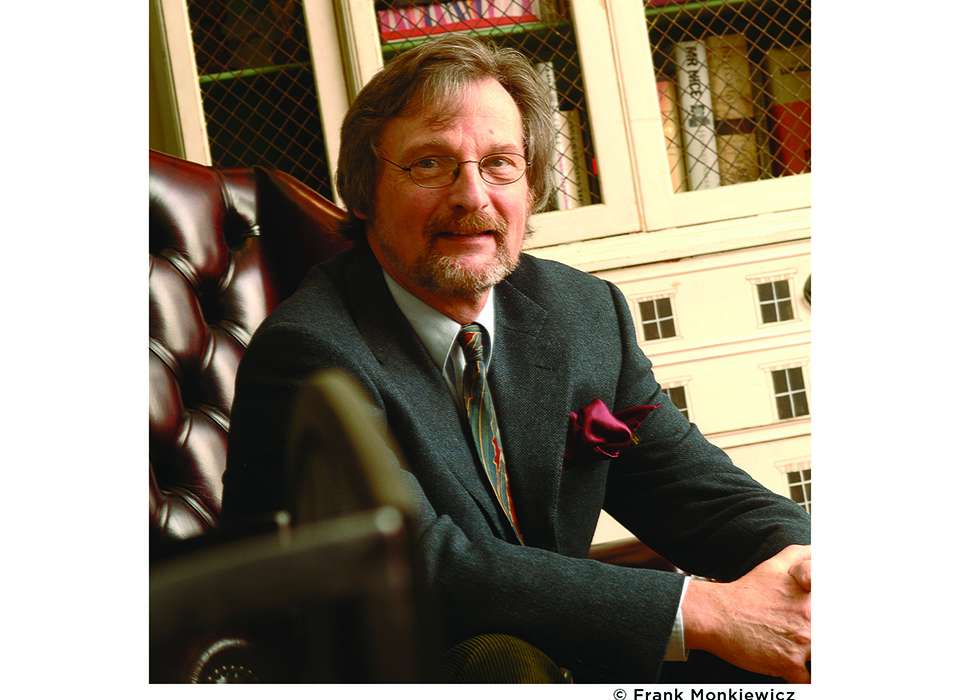
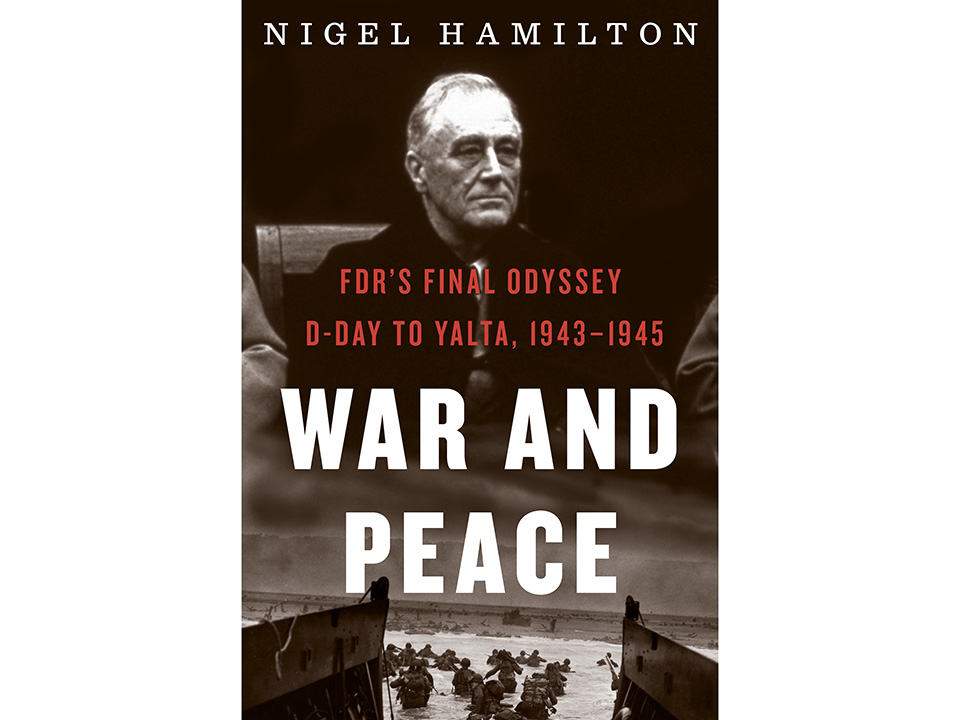
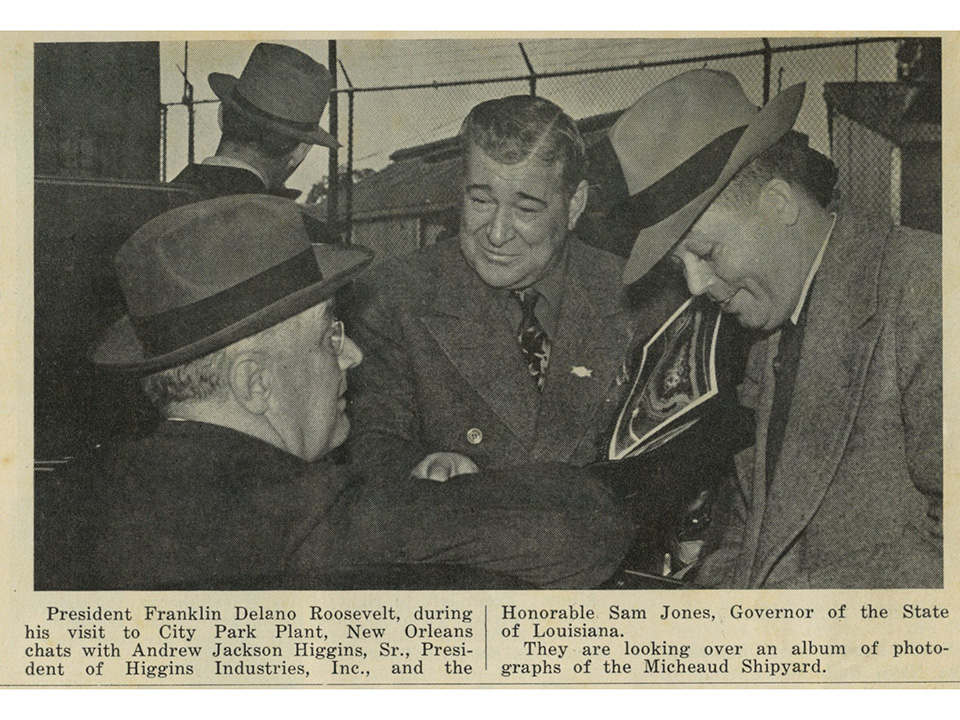
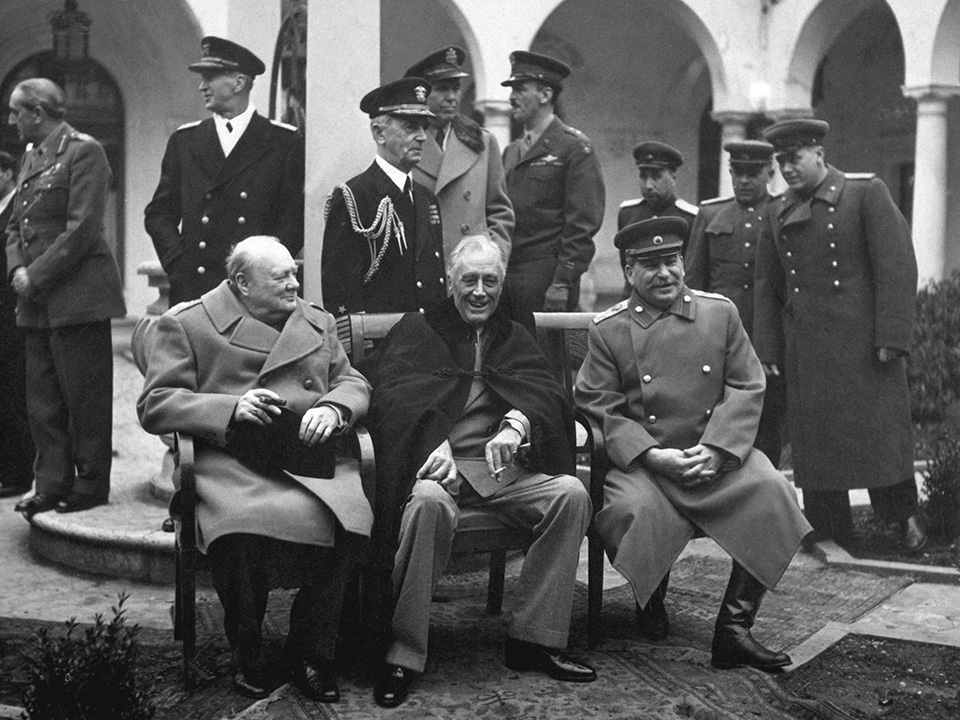
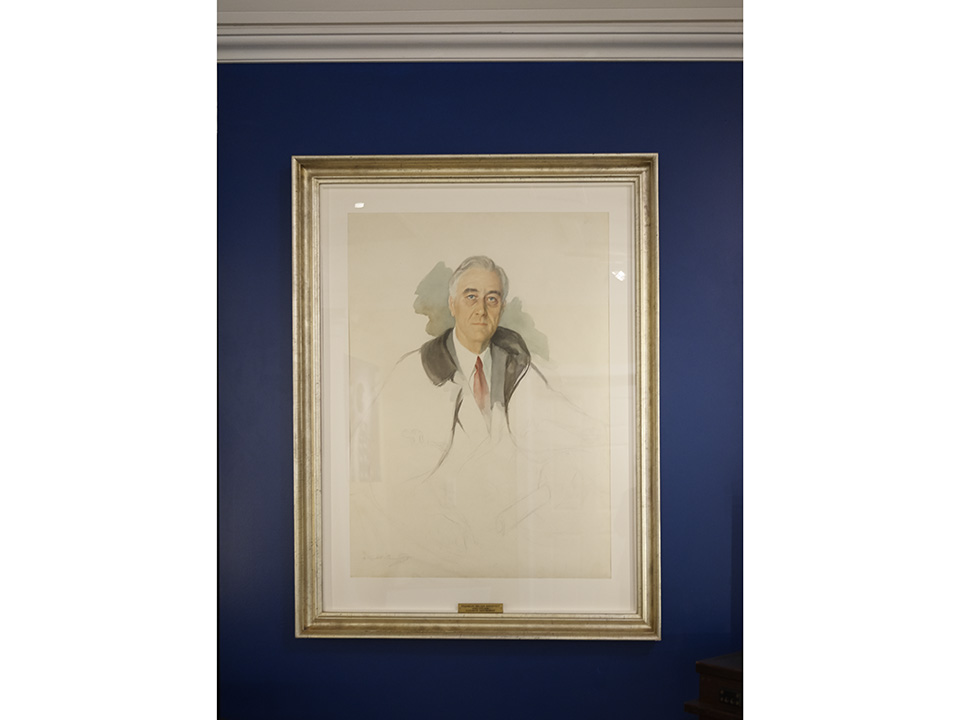

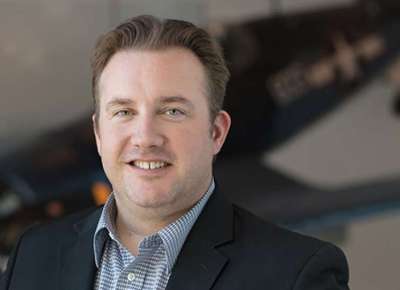




![Max Fuchs, New York City cantor, sings as Rabbi Sydney [sic] Lefkowitz, Richmond, VA, conducts the first Jewish services from Germany.](/sites/default/files/styles/max_650x650/public/2025-10/image1.jpg)


